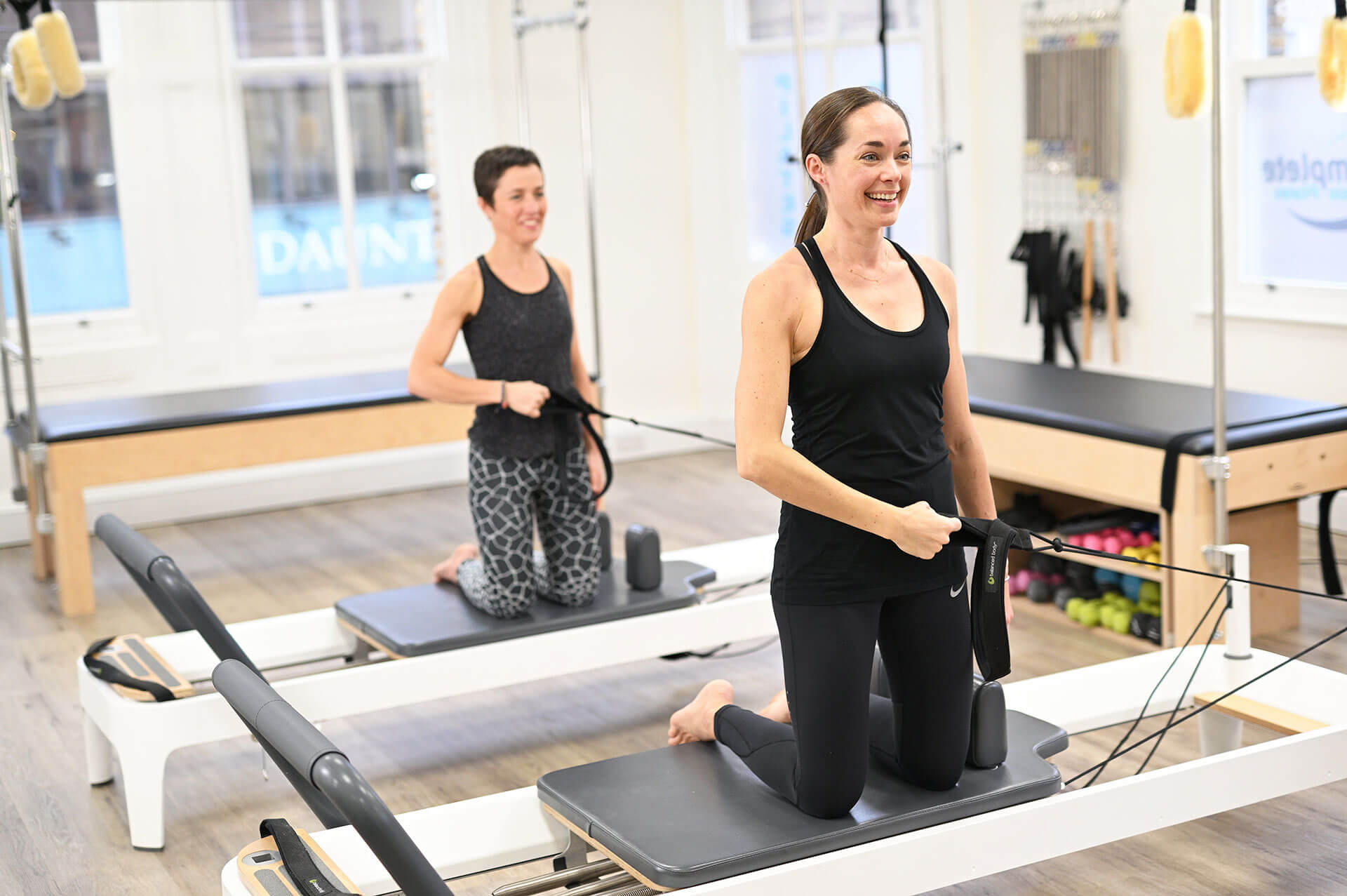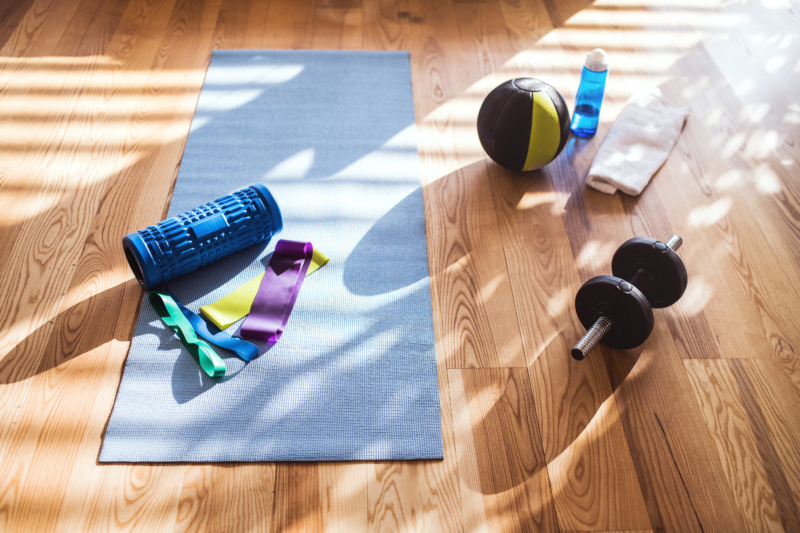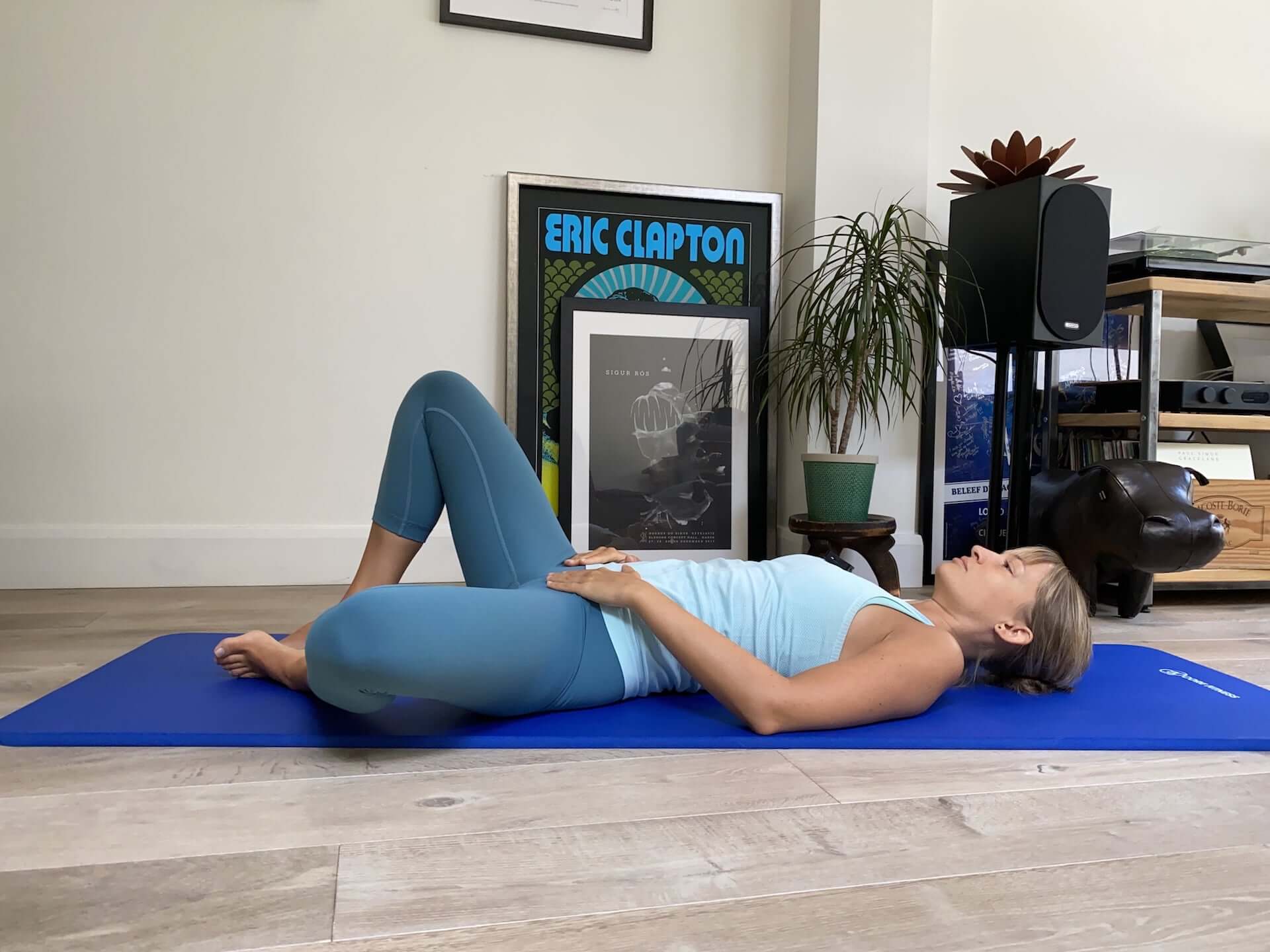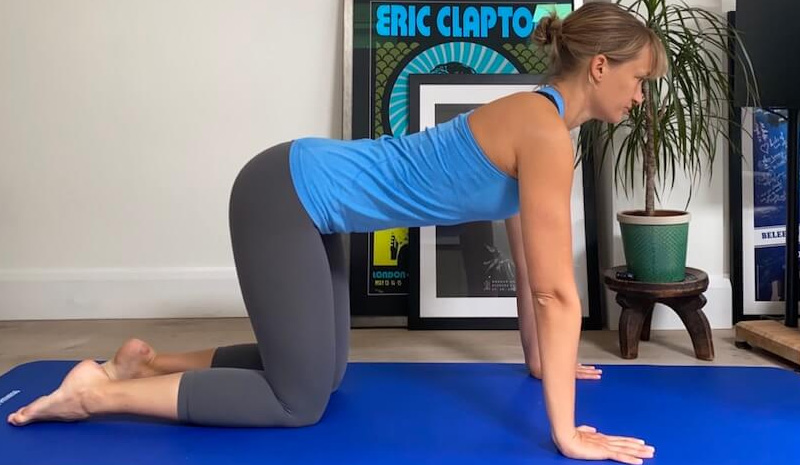Pilates has grown in popularity over the years and is expected to reach a value of $215,811 million by 2025. This is down to a number of contributing factors from increased health awareness, a conscientious younger generation, greater disposable income and the prevalence of obesity, to name a few.
As with other activities, Pilates utilises a whole host of equipment which play a role in defining Pilates and the associated benefits. The founder of Pilates, Joseph Pilates, is responsible for creating the core principles of Pilates as well as some of the core Pilates equipment which was referred to as ‘apparatus’. Some of the original pieces of equipment are still used today, such as the Reformer, Cadillac, Wunda Chair and the Ladder Barrel.
In this article, we will take a look at the different types of Pilates equipment you may encounter in your Pilates class. This will enable you to get a better understanding of the different types of Pilates equipment and the classes most suitable to your preferences and goals.
Pilates equipment varies from smaller, portable pieces such as resistance bands, Pilates mats and the magic circle (also known as the Pilates ring) to many large pieces of apparatus such as the Pilates Reformer, Pilates Chair and the Cadillac.
1. Pilates Mat
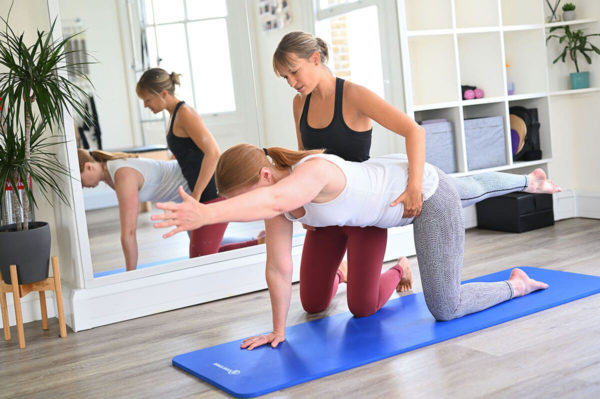
Pilates mats are often confused with Yoga mats, however, there are some differences to be aware of. For example, a Pilates mat is typically thicker, may be larger in size and has slicker surfaces.
Generally speaking, many exercises within the Pilates repertoire are completed on your back or stomach, as well as requiring students to perform spinal rolling exercises. These types of exercises require a thicker mat to support and cushion the body.
Mats are typically used in a mat Pilates class, the most accessible form of Pilates, which teaches students the fundamental movement techniques as well as challenging them into advanced movements.
2. Magic Circle or Pilates Ring
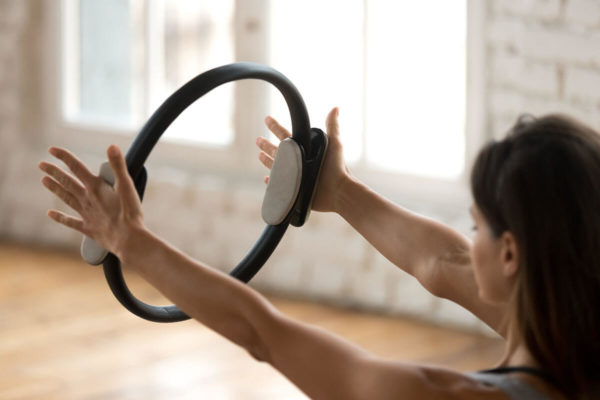
The magic circle, also known as the Pilates ring, is a small and portable piece of equipment invented by Joseph Pilates.
This type of Pilates equipment is a lightweight circular resistance prop which is used in both mat and reformer classes.
The prop is designed to provide varying amounts of resistance in order to increase support or offer greater challenge during exercise. Resistance will depend on how hard it is being squeezed but bear in mind it is not designed to be squeezed to death!
The magic circle can be incorporated in many exercises including dead bugs, hip extensions and fire hydrants, and press ups to either assist the movements or make them harder.
For more information, please read our guide to The Magic Circle.
3. Pilates Band or Resistance Bands
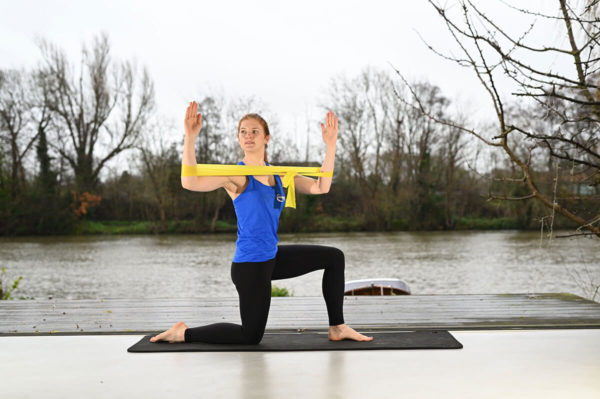
Another small prop is the resistance band, also known as the Pilates band. Similarly to the magic circle, the resistance band offers resistance in exercises to make them more challenging or assistive.
The resistance band comes in varying lengths and resistance levels from light, medium and heavy. Benefits include:
- Increase assistance into exercises by providing feedback
- Increase difficulty of exercises
- Help to build strength
- Increase the variety of mat exercises
For more information, please read our guide on the Pilates band.
4. Pilates Reformer
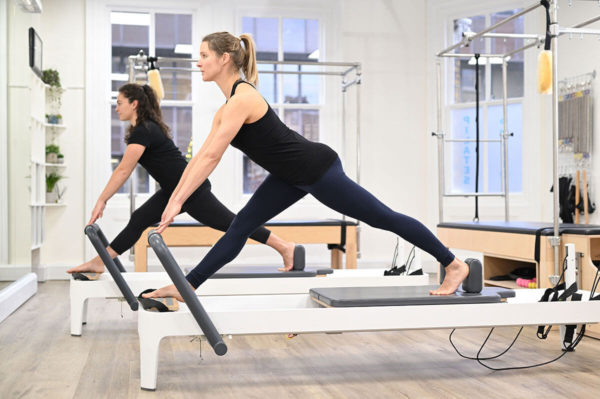
The Pilates reformer is one of the original types of equipment invented by Joseph Pilates when he was working at a hospital during the First World War. He originally made the reformer from a bed frame and springs to help patients strengthen their muscles. The reformer is also arguably the piece of equipment which plays the biggest role in distinguishing Pilates.
The Pilates Reformer is a large piece of apparatus consisting of a rectangular frame made from either wood or metal. A carriage (which is a padded platform) sits on the frame attached to runners enabling it to slide along the length of the frame. At one end of the frame is a foot bar and at the other are two long ropes with handles attached to pulleys. The tension of the reformer can be adapted by adding or removing springs which attach the carriage to the frame.
The Pilates reformer can be used when you are lying down, on your side, standing, kneeling or on all fours and is designed to help:
- Mobilise the spine
- Assist your movements
- Strengthen the abdominals and whole body
- Improve technique
- Increase difficulty
- Promote better balance
- Enhance coordination
- Improve mobility
- Increase flexibility
- Aid range of movement
For more information, please read our guide to The Reformer Pilates.
5. Cadillac or Trapeze Table
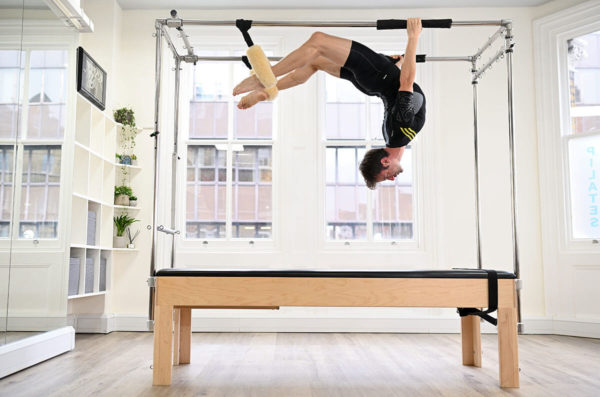
The Cadillac also known as the trapeze table is the most versatile and supportive piece of Pilates Equipment. The Cadillac looks similar to a four poster bed; the apparatus comprises a leather clad table and a metal frame with four uprights positioned in each corner.
Attached to the frame is the trapeze bar, fluffy straps, push bar and cross bar used for a variety of exercises in order to aid assistance or resistance in the movement.
The trapeze table can be used for basic exercises usually completed in mat Pilates as well as more advanced Pilates exercises, whether it be lying down, kneeling or in a standing position.
The cadillac has a number of benefits, including:
- Aid rehabilitation
- Increase complexity of exercises
- Improve stability
- Promote balance
For more information, please read our guide to the Pilates Trapeze Table.
6. Pilates Chair
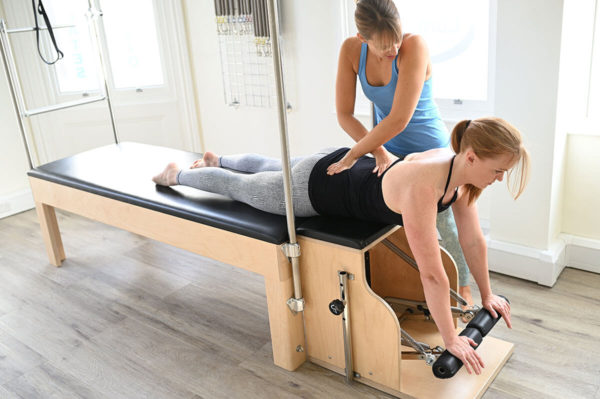
The Pilates chair also known as the Wunda chair, is another original piece of Pilates equipment invented by Joseph Pilates.
This type of Pilates equipment is designed to be compact and comprises a (typically wooden) box with a padded seat and a pedal attached by springs. The springs allow for tension to be increased or decreased depending on the exercise and desired level of intensity.
Exercises using the Pilates chair are typically completed in a standing or seated position, but can also be performed on your front or back.
The Pilates chair is great for a number of reasons, including:
- Injury rehabilitation
- Enhance sports performance
- Increase strength
- Promote balance
- Improve foot control and strength
For more information, please read our guide to the Pilates chair.
7. Ladder Barrel or Barrel
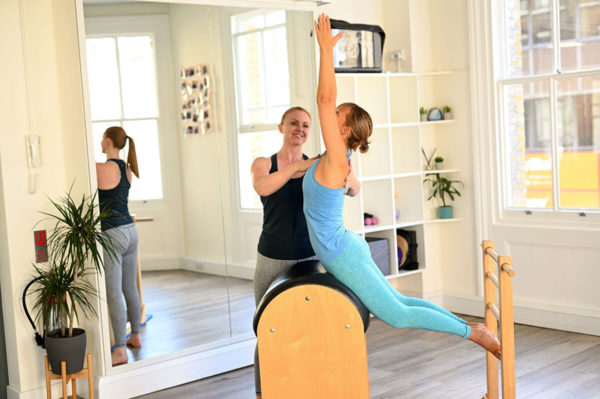
The Ladder Barrel is an original piece of Pilates equipment designed by Joseph Pilates using an empty beer keg.
The Ladder Barrel consists of a wooden ladder with rungs and the barrel which is padded and leather-clad. The two components are attached by a sliding frame base.
The Ladder Barrel is designed to encourage the spine to move into extension and flexion which helps to improve range of movement. This type of Pilates equipment can also be used for ab and oblique exercises.
For more information, please read our guide to the ladder barrel.
8. Foam Roller
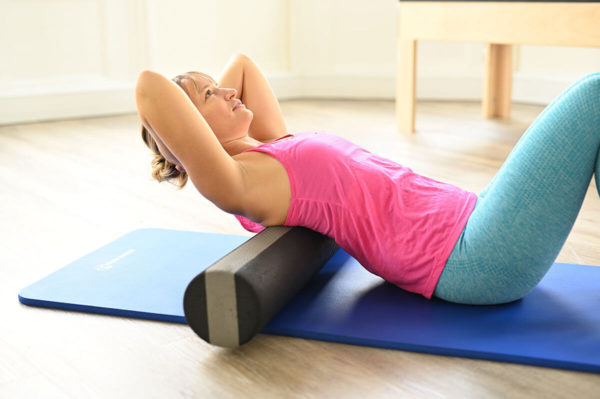
The foam roller is a classic small prop used within Pilates and is a popular piece of equipment for its versatility which leads itself both to self-massage and exercise.
Foam rollers are long, cylindrical shaped tubes made from foam.
By sitting or lying on the floor and placing the foam roller underneath the area of the body you want to release, you can give yourself a massage by applying pressure. This is particularly important to reduce the risk of injury as well as aid recovery. Even for less active individuals who find themselves desk-bound most of the day, the foam roller can be ideal to relieve an achy shoulder or a sore lower back.
They can also be used in exercise and mobilisation, for example, abdominal exercises or to behave in a similar way as the ladder barrel.
Benefits of the foam roller include:
- Help alleviate tension
- Aid recovery
- Enhance restoration
- Increase range of movement
- Build strength
- Improve coordination and control
For more information, please read our guide to the foam roller.
9. Stability and Over Ball
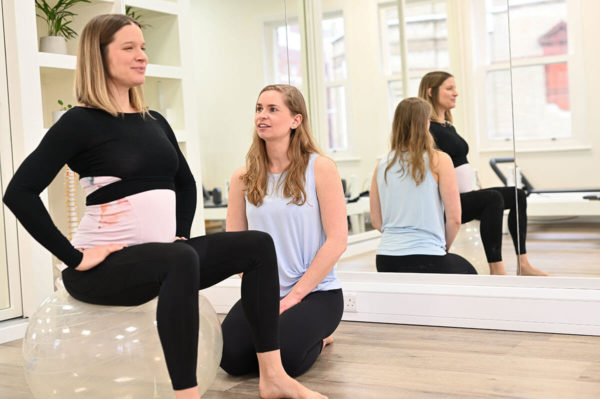
The stability ball is one of the most versatile types of Pilates equipment. It is also known as a fitness, gym or Swiss ball made from soft elastic and filled with air.
In Pilates, this type of equipment is used for equipment-style movements but on the mat which incorporates the whole body such as reverse abs. It can also be used for strength building exercises such as hamstring curls and hip thrusts.
Benefits of the stability ball include:
- Increased muscle activation
- Improves balance and coordination
- Enhances mobility
- Build and develop strength
- Challenges your strength and control in all directions
- Assists movements in clients who are pregnant
For more information, please read our guide to the stability ball.
Which Pilates class is right for you?
Now you have a better understanding of the types of Pilates equipment you may come across, now is the time to decide which Pilates class is right for you.
Having been created back in the 1920s, Pilates has evolved over time creating variations of Pilates which offer specific health and physical benefits.
Pilates classes include:
- Classical Pilates
- Mat Pilates Pilates
- Contemporary Pilates
- Reformer Pilates
- Clinical Pilates
To find the most suitable class for you, read our guide to the types of Pilates equipment.
Why Complete?
At Complete Pilates, we’ll be happy to help you find the right class for you based on your needs and goals. Our physiotherapists and clinical instructors will complete a pre assessment to understand your problem areas (if you have any) as well as your goals and objectives to create a tailored Pilates programme designed for you.
We have a range of classes to choose from including:
- Pilates for beginners
- Pregnancy Pilates
- Postnatal Pilates
- Physio Pilates
- Online Pilates
- Group Pilates
Come and try Pilates in the City of London, or any of our studios or, for more information, please get in touch online or contact us on 0203 764 5668.
These blogs are designed to give information to everyone, however, it is important to remember that everyone is different! If you have not seen one of our therapists and have any questions about injuries, what you have read or whether this may be useful to you, please just ask. We are more than happy to help anyone and point you in the right direction. Our biggest belief is that education is key. The more you understand about your injury, illness and movement, the more you are likely to improve.


